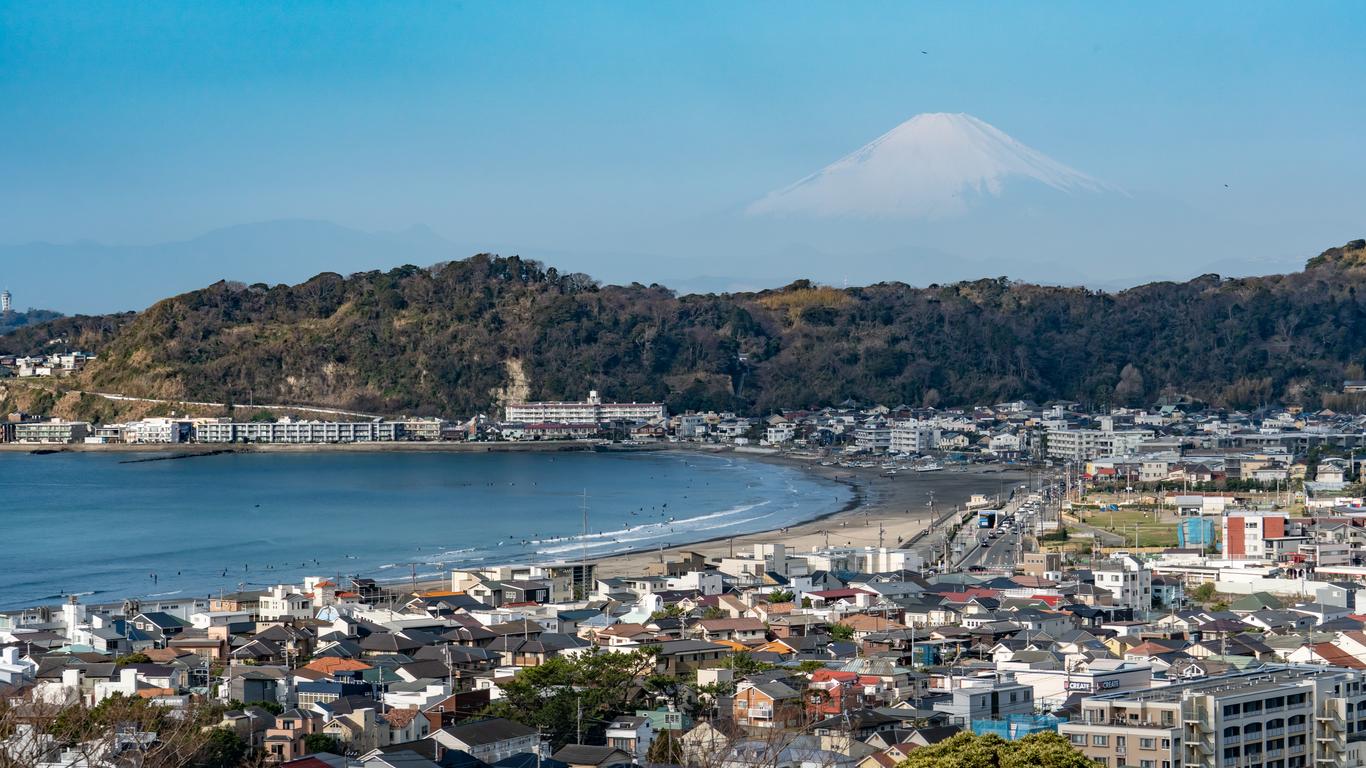Quaint little Kamakura hides an inspiring history, with numerous temples and shrines showcasing the ancient world of the Kamakura shoguns. Located just an hour south of Tokyo, Kamakura was Japan's political capital for over 150 years in the 12th to 14th centuries. It's now a very popular day trip from Tokyo, yet also a charming place to discover authentic Japan without the crowds of the nearby metropolis.
Evocative sights are scattered across Kamakura, the majority of them built when the city was the capital of Japan. The most famous and popular sights are found in Western Kamakarua, where a 13-metre Giant Buddha is sculpted from solid bronze and the wooden Hasedara temple is crowded with Benzaiten statues. From here, a 20-minute walk leads to the atmospheric Zeniarai Benten Shrine. This western side of Kamakura gets very crowded with visitors at weekends.
The resplendent Tsurugaoka Hachiman-gu Shrine is the highlight of Central Kamakura and the largest Shinto structure in the area. Some of Japan's oldest Zen temples are found in North Kamakura, each with vibrant gardens and teahouses selling sweet cold noodles. Lesser visited and enveloped by mystique, East Kamakura takes visitors to tranquil hillside temples and tea ceremonies in bamboo groves.
A long hiking trail circumnavigates the hills and forests of Kamakura, providing a three-hour hike that connects many of the city's main attractions. Visitors can also rent bicycles although most of the city is on a hill. Local buses provide quick connections between different areas of the city and metered taxis are readily available. Kamakura Station is one hour by train from Tokyo, or 25 minutes from Shinagawa and Yokohama.
Legend dictates that money thrown into the Zeniarai Benten Shrine will be doubled, with the power of the folklore enhanced if a Shinto priest uses a flint to strike sparks on the coin beforehand. This is just one of many legends that continue to be narrated, some 700 years after the Kamakura shoguns.





